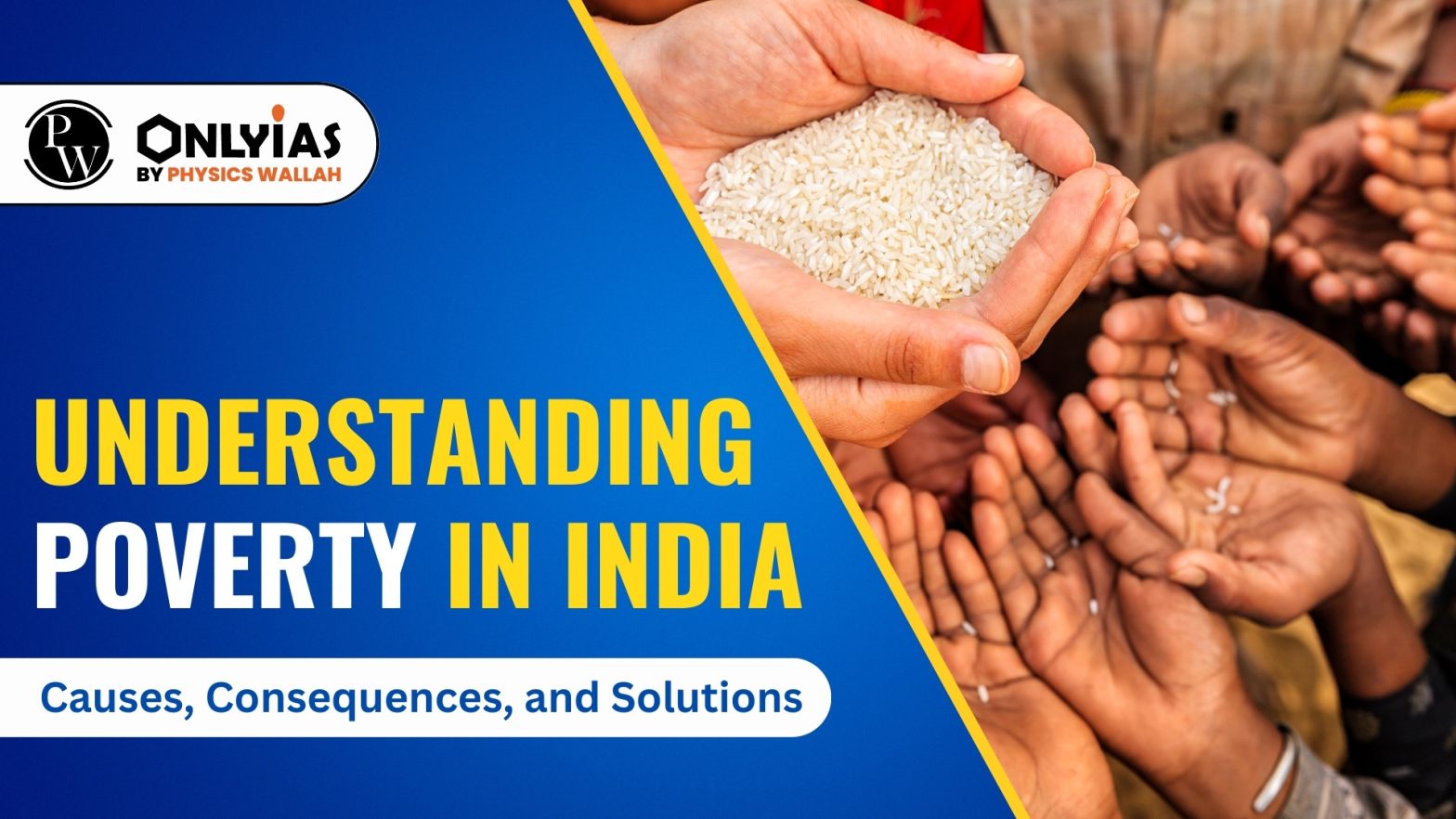
Context: Recently, Prime Minister Narendra Modi said more than 13.5 crore Indians had escaped poverty in India in the last five years.

| Factors | Description |
| Historical Factors For poverty in India |
|
| Economic Factors |
|
| Social Factors |
|
| Political Factors |
|
| Climatic Factors |
|
Poverty affects every sphere of life. By linking poverty with the Sustainable Development Goals (SDGs), we can better understand the effects of poverty in India.
| Initiatives | Description |
| Mahatma Gandhi National Rural Employment Guarantee Act (MGNREGA) |
|
| National Rural Livelihood Mission (NRLM) |
|
| Pradhan Mantri Jan Dhan Yojana (PMJDY) |
|
| Pradhan Mantri Ujjwala Yojana (PMUY) |
|
| Pradhan Mantri Awas Yojana (PMAY) |
|
| Pradhan Mantri Mudra Yojana (PMMY) |
|
| Skill India Mission |
|
| Stand Up India |
|
International Day for the Eradication of Poverty
|
| Must Read | |
| NCERT Notes For UPSC | UPSC Daily Current Affairs |
| UPSC Blogs | UPSC Daily Editorials |
| Daily Current Affairs Quiz | Daily Main Answer Writing |
| UPSC Mains Previous Year Papers | UPSC Test Series 2024 |
<div class="new-fform">
</div>